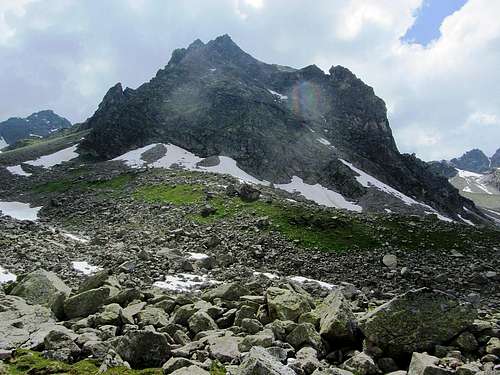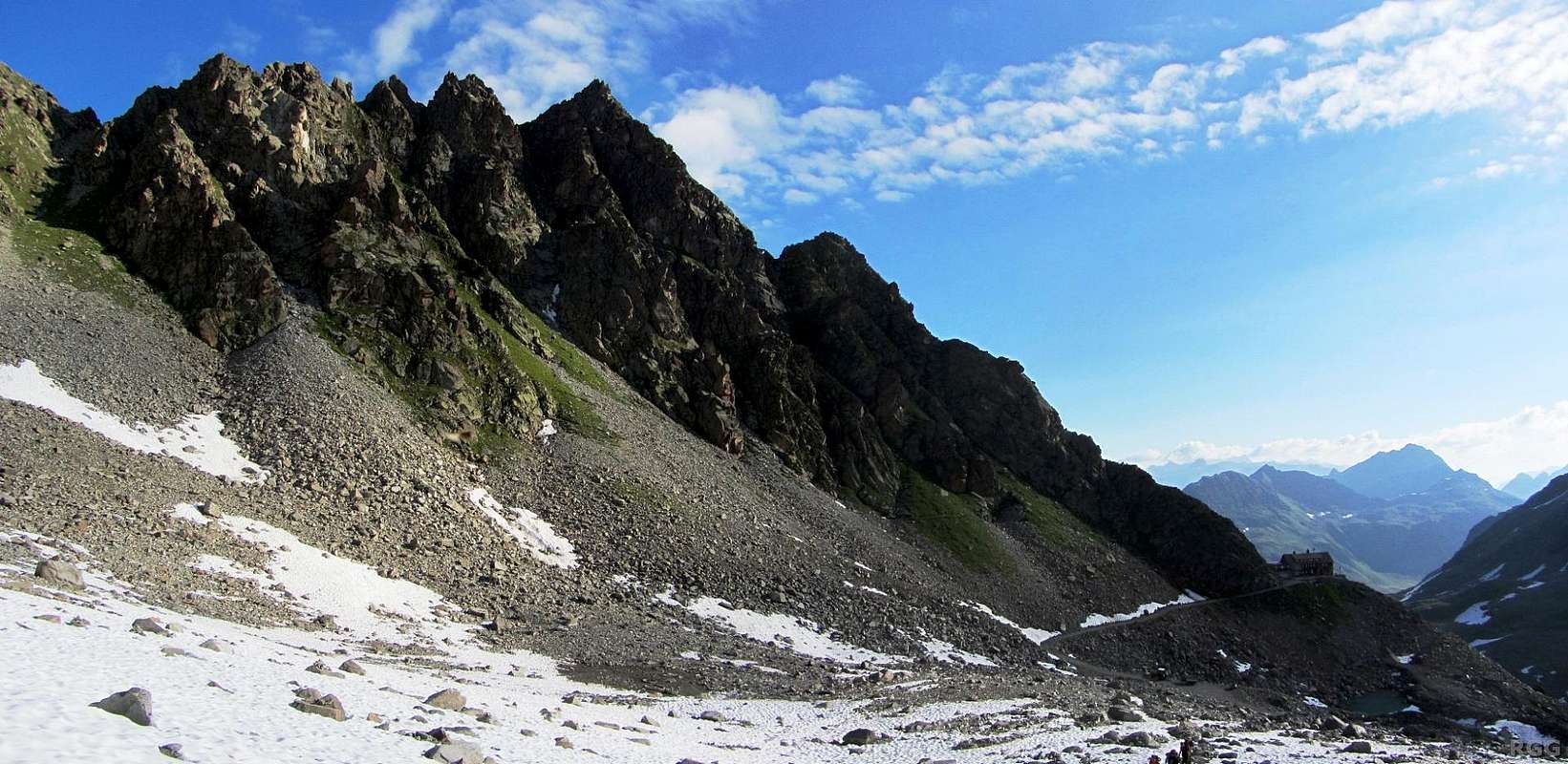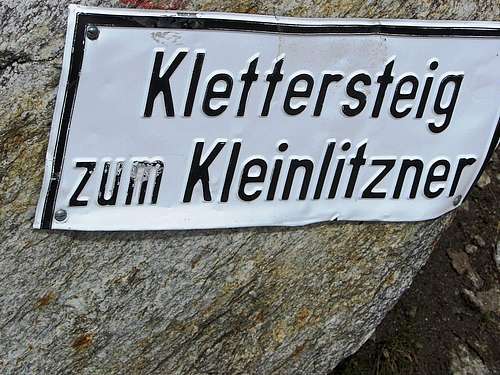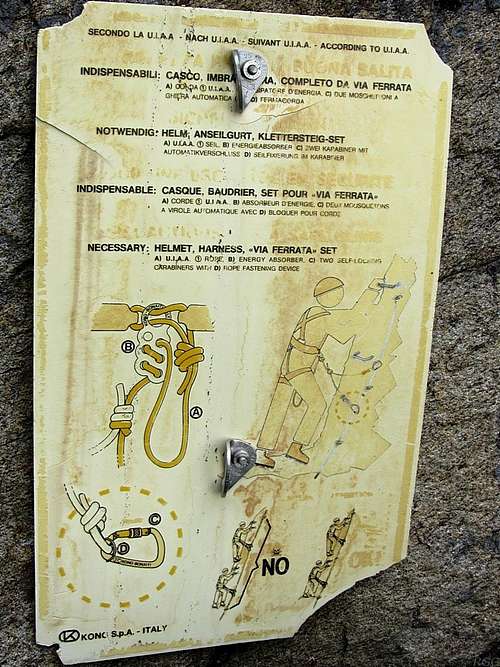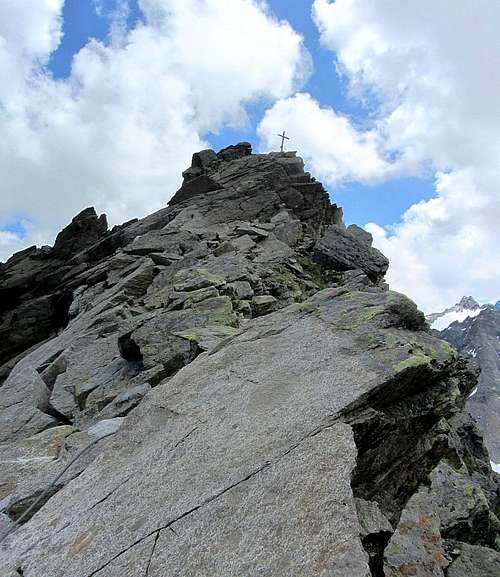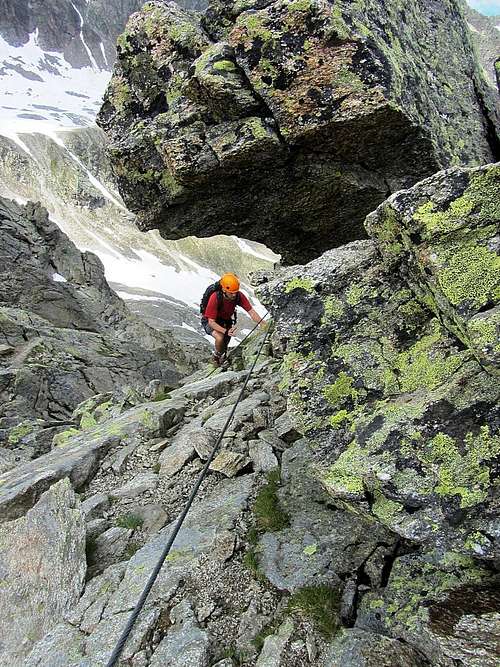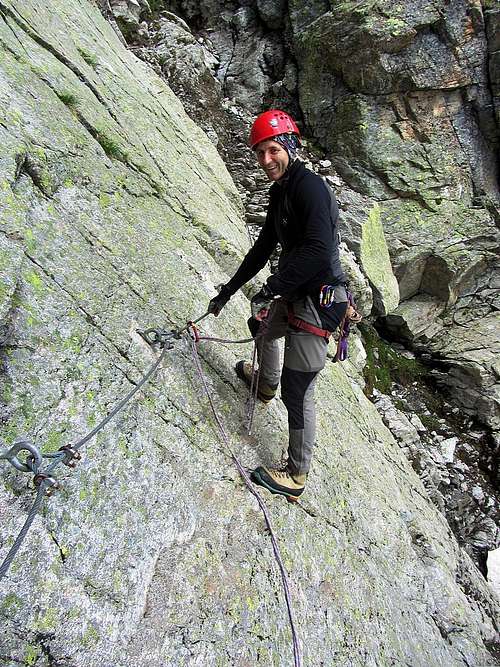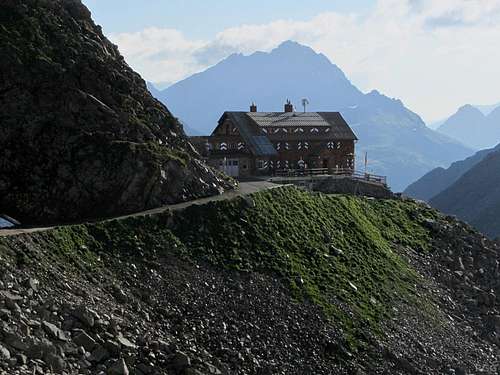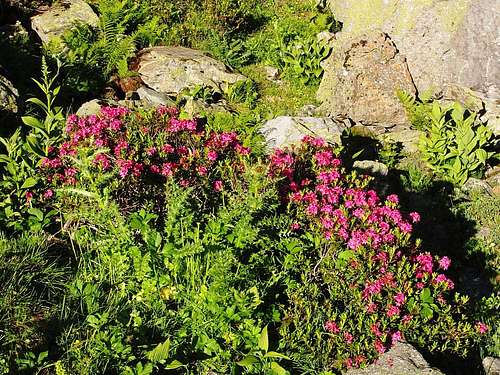|
|
Mountain/Rock |
|---|---|
|
|
46.89980°N / 10.03300°E |
|
|
Mountaineering, Aid Climbing |
|
|
Spring, Summer, Fall |
|
|
9131 ft / 2783 m |
|
|
Overview
In addition to a few larger glaciated areas, the Austrian Alps also have several smaller ones. Straddling the Swiss-Austrian border, the Silvretta group is one of those. The group has a lot of of summits over 3000m, but elevation is not the only mark of a fine mountain. At 2783m, Kleinlitzner, also written Klein Litzner or Kleiner Litzner, is only a minor peak. There are higher ones very close by, but it still quite scenic to look at. Especially when approaching it from the north, coming up the Kromer valley, it looks very imposing.The normal route to the summit is an attractive Via Ferrata, grade B/C. That puts it within reach of hikers without mountaineering experience, but with a head for hights, the proper gear and someone else to come along on the climb to explain how to use it.
The "ß" in German words is pronounced as an "s".
Ignoring some finer points, in writing it can be replaced by "ss", which means that Grosslitzner is just a different spelling of Großlitzner. See here for a more elaborate explanation.
Ignoring some finer points, in writing it can be replaced by "ss", which means that Grosslitzner is just a different spelling of Großlitzner. See here for a more elaborate explanation.
Following the border further to the southeast, the ridge drops to the Seelücke (2776m), then rises to Gross Seehorn (3121m), the highest peak in the direct vicinity. "Lücke" means "gap", and there are marked hiking trails over both of them. And further along on the ridge, just past Gross Seehorn, is Großlitzner.
Directly north of Großlitzner and Gross Seehorn lies the small Litzner glacier. Both from the route and from the Kleinlitzner summit, there are great views of all the surrounding peaks and this little glacier.
At 2538m, near the start of the Via Ferrata, lies the Saarbrücker Hütte, a welcoming place to spend the night or just for refreshments. I recommend their cake!
Kleinlitzner from the south, seen from the trail to the Seelücke. If you look closely, you can see the summit cross. The last part of the normal route is by the short easy ridge on the left side of the summit, but it doesn't look easy to get up there in the first place. Fortunately a Via Ferrata leads the way.
Scroll to the right to see the Saarbrücker Hütte low on the west ridge.
Scroll to the right to see the Saarbrücker Hütte low on the west ridge.

View south from the Kleinlitzner summit. From left to right: Großlitzner, Gross Seehorn and Chlein Seehorn.
Getting There
Google map centered on the Saarbrücker Hütte. Switch to satellite view and zoom in, and you can clearly see it.
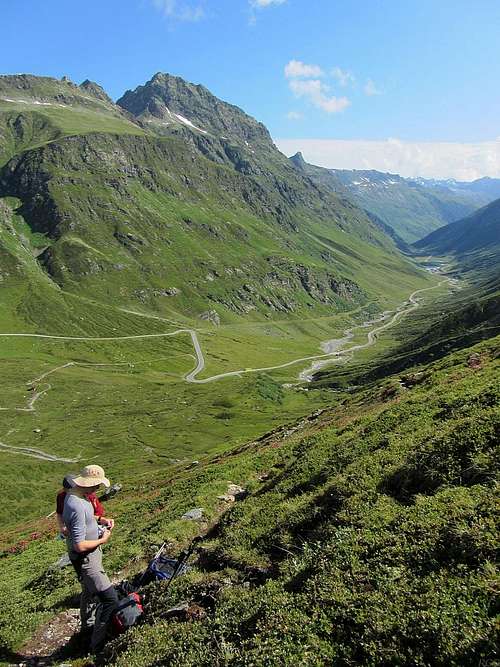
View down the Kleinvermunt valley from Bielerhöhe, with the Silvretta Hochalpenstraße towards Galtür
To avoid the road, there are hiking trails branching off at various sections. On foot, count on two hours to get to the refuge.
A bit longer but more scenic is the hiking trail from Bielerhöhe via Tschifernella - count on half an hour extra.
The road leading to the Vermunt Stausee as well as to Bielerhöhe is the Silvretta Hochalpenstraße. This is a toll road, but on the plus side, parking is free. In winter the road is closed. NOTE: In 2013, the toll road closes early on the western side, on 30 September. You can still get there from Partenen by the Vermuntbahn cable car and a shuttle bus, or you can drive up from the eastern side.
Buses frequently travel along the Silvretta Hochalpenstraße. The toll part is between the Austrian villages of Partenen and Galtür. The only way to get to Partenen is from Bludenz, to the northwest, and similarly, the main road to Galtür is from Landeck, to the northeast. Both Bludenz and Landeck have a train station. For detailed travel information, check out OEBB. You can search directly for Bielerhöhe or for Vermunt Kraftwerk (that's German for power station).
From Switzerland, all approaches are longer. The shortest routes from Switzerland to the Saarbrücker Hütte are from Klosters-Monbiel via the small Seetalhütte, or from Klosters-Schlappin, but I don't know how long either of these routes takes. Let me know if you have done this, so I can update the page. Klosters can easily be reached by train. Swiss trains are expensive, but the network is very good.
Normal Route
OSM map of Kleinlitzner, with the hiking trails in the area and even the Kleinlitzner Via Ferrata
From the Saarbrücker Hütte, start out west on the trail to the Kromerlücke and the Tübinger Hütte. After a few hundred meters you'll get to the turnoff towards the Via Ferrata on your right (46.8981°N / 10.0333°E). Follow the trail to the north, up the slopes, until you come to an information panel. If you haven't put on your gear, this is the place to do so. Even if you're an accomplished climber and don't need a Via Ferrata set, a helmet is highly recommended, if only because there may be other people climing above you that might dislodge something.
After the information panel, steel cables lead all the way to the top. The route traverses the slopes, then makes its way up on the rocky walls of a couloir. Sometimes it's exposed, but it's never difficult. Having the Via Ferrata on the walls actually makes it safer than if you would make your way up through the middle of the couloir.
Eventually the route comes to a saddle not far below the summit. The cross beckons, and it's just a matter of minutes now. It's easy scrambling all the way to the top, and once again secured by a steel cable.
Expect about two hours from the Saarbrücker Hütte to the summit and back. If the route is busy it may take a bit longer.
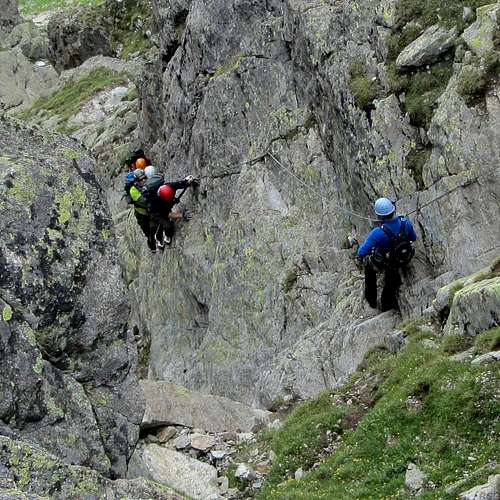
A group of climbers on the route. Apart from the cable that you can use, there are lots of steel pegs to stand on.
Red Tape
The Silvretta Hochalpenstraße between Partenen and Galtür is a toll road. Even as a bus passenger you have to pay extra on top of the fare; in 2013, I paid € 3.50.When to Climb
Best from mid to late spring to early autumn, as long as there isn't too much snow so the Via Ferrata isn't all covered up.Accommodation
The Saarbrücker Hütte is ideally located if you are on a longer trip. A fine alternative is the Madlener Haus at Bielerhöhe.There are lots of accommodation options in the nearby villages, including Partenen and Galtür. In winter this is a busy ski area, but in summer it's more relaxed and usually there is plenty of room.
Camping wild is not allowed, unfortunately, for we passed some excellent sites along the Tschifernella trail, and several more as we came down the Kromer valley.
External Links
Kleinlitzner Klettersteig - A good description of the route, in German.
Early morning panorama of the Glotterspitze, Grosslitzner and Gross Seehorn from close to the Saarbrücker Hütte


